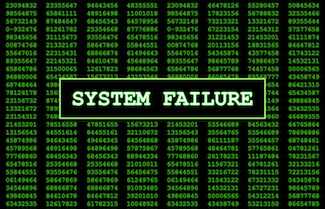USPTO Provides Guidance on Standards for Enablement Requirement | McDonnell Boehnen Hulbert & Berghoff LLP
On January 10th, the U.S. Patent and Trademark Office published a Notice in the Federal Register (89 Fed. Reg. 1563) regarding proposed Guidance on how the Office will apply the enablement requirement under 35 U.S.C. § 112(a) in light of the Supreme Court’s decision last year in Amgen v. Sanofi. In a nutshell, the Office announced that it will do so by continuing to use the rubrics established by the Federal Circuit in In re Wands.
The Notice sets forth the Office’s understanding of the Supreme Court’s decision and its substantial adherence to existing law, particularly Wands. But the Office is also cognizant (as the past 15-20 years has illustrated) that Supreme Court precedent is certainly (if not the only) the most relevant source of interpretation on how the patent statute should be understood and applied. The Notice cites O’Reilly v. Morse, 56 U.S. 62 (1854); The Incandescent Lamp Patent, 159 U.S. 465 (1895); and Holland Furniture Co. v. Perkins Glue Co., 277 U.S. 245 (1928), in this regard. The Office also recognizes more recent Federal Circuit precedent, including McRO, Inc. v. Bandai Namco Games Am. Inc., 959 F.3d 1091 (Fed. Cir. 2020); Wyeth & Cordis Corp. v. Abbott Laboratories, 720 F.3d 1380 (Fed. Cir. 2013); Enzo Life Sciences, Inc. v. Roche Molecular Systems, Inc., 928 F.3d 1340 (Fed. Cir. 2019); and Idenix Pharmaceuticals LLC v. Gilead Sciences Inc., 941 F.3d 1149 (Fed. Cir. 2019), and the Supreme Court’s holding in Amgen, based on Wood v. Underhill, 46 U.S. 1 (1846), and Minerals Separation, Ltd. v. Hyde, 242 U.S. 261 (1916), that a “specification is not necessarily inadequate just because it leaves the skilled artisan to perform some measure of adaptation or testing.”
This is where the Wands factors come into play, in providing the framework for determining the “reasonableness of experimentation.” The Notice acknowledges that the Court did not expressly address or rely on the Wands factors but finds support for their continued analytical vitality in the Court’s emphasis that “the specification may call for a reasonable amount of experimentation to make and use the full scope of the claimed invention,” the Wands factors being probative thereof. The Notice cites post-Amgen decisions, specifically Baxalta Inc. v. Genentech Inc., 2023 U.S. App. LEXIS 24863 (Fed. Cir. 2023); Medytox, Inc. v. Galderma S.A., 71 F.4th 990 (Fed. Cir. 2023); and In re Starrett, 2023 WL 3881360 (Fed. Cir. 2023) (non-precedential), for reference to or reliance upon Wands. Returning to the Federal Circuit’s decision in Amgen (affirmed by the Supreme Court), the Notice cites the determination in that decision that “the scope of the claims was far broader in functional diversity than the disclosed examples, that the invention was in an unpredictable field of science with respect to satisfying the full scope of the functional limitations, and that there was not adequate guidance in the specification,” all of which considerations track with the Wands factors. Similar assessments are provided for the Baxalta (district court litigation), Medytox (PTAB decision in a PGR proceeding, and Starrett (PTAB decision in an ex parte appeal) Federal Circuit decisions.
The Notice and proposed Guidance falls within the statutory interpretive protocol wherein the Supreme Court provides broad interpretation of the limits the statute imposes on what is patentable, the Federal Circuit applies those standards to individual cases cabined by their particular facts, and the Office, as an administrative agency, applies both layers of precedential interpretation in examining patent applications for compliance with the statutory standards as enacted by Congress and interpreted by the courts. The Notice particularly specifies that it will apply the Wands factors “to ascertain whether the experimentation required to enable the full scope of the claimed invention is reasonable” “regardless of technology” under M.P.E.P § 2164.04.
The Notice contains contact information for Office personnel from whom additional information can be obtained: Mary C. Till, Senior Legal Advisor, Office of Patent Legal Administration, at Mary.Till@uspto.gov or 571–272–7755; or Andrea S. Grossman, Legal Advisor, Office of Patent Legal Administration, at Andrea.Grossman@uspto.gov or 571–270–3314.
[View source.]






